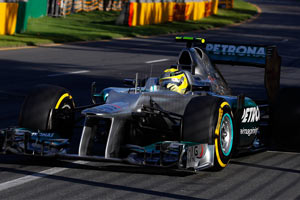hardingfv32 wrote:May I assume that drag reduction of the diffuser is not in the running?
Brian
From what I recall, the drag from the diffuser vs. the amount of downforce it produces is negligible, so I think that would be unlikely.
Stalling the beam wing is a possibility, but the logic of that considering what we know (or think we know!) of duct locations seems unlikely. Think of it this way:
If the source intake is ahead of the beam wing, and air travels through the duct we've seen in the crash structure, through the beam wing, and up the endplates to the holes exposed by the DRS, then when those holes are opened (the "fluidic switch" idea), one would think there would be actually be LESS blowing from a slot in the beam wing because resistance would be taken away further along the path. This would make the blowing effect stronger when DRS is not enabled, which would be the opposite of what you would want.
Conversely, if the source intake is the holes exposed by the DRS, then what is the point of the duct in the crash structure?
There may be another possibility, if we're talking about the main effect being on the beam wing: using the blown air to add flow/velocity to the underside of the beam wing (by orienting a slot to exit parallel to the bottom surface rather than perpendicular, as you would to stall it), thereby increasing the downforce produced by the beam wing when the DRS is not active. When the DRS is active, and the holes open and an alternate path for the air to escape out those holes becomes available, reducing the effect. If that's what's going on, a shot of the beam wing from behind/slightly below might show the required slot(s) on the underside of the wing.
Again, I'm not an aerodynamicist by any stretch of the imagination, so I don't know if that's even feasible, but it seems like a possibility to me...
EDIT: Just realized - wouldn't that be an application of the Coanda effect?




